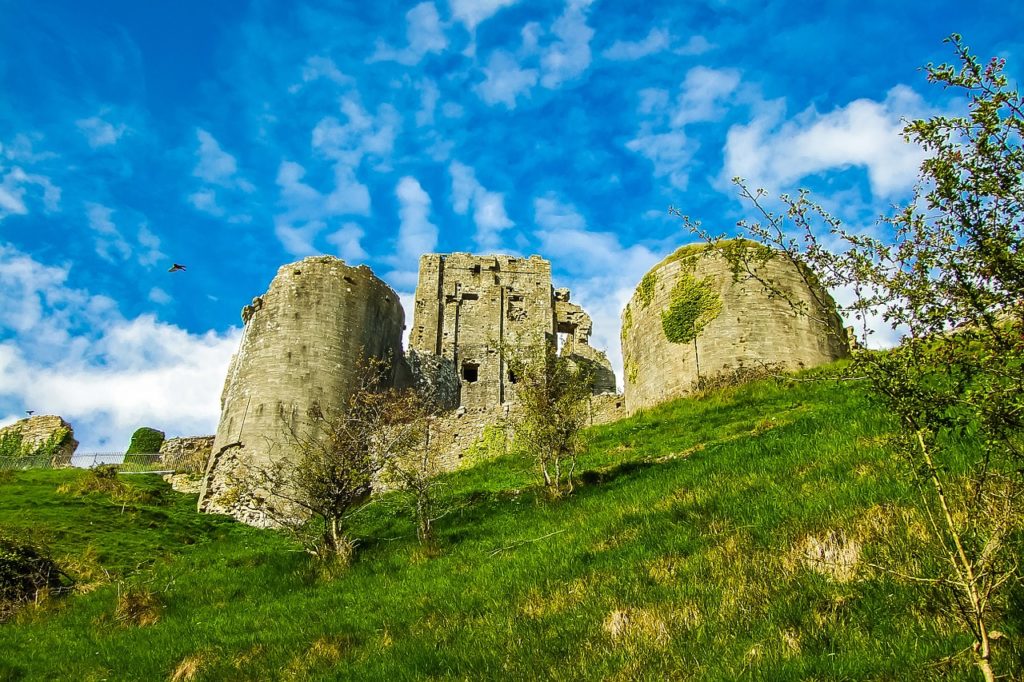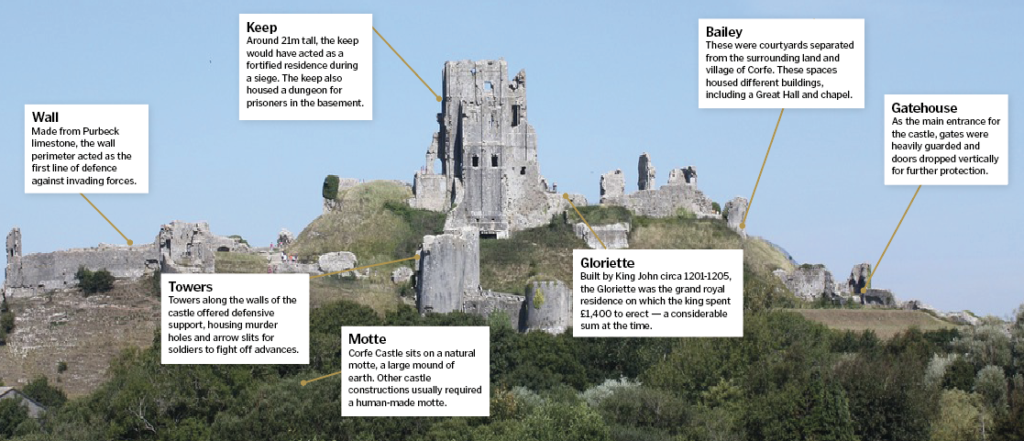Inside the walls of Corfe Castle
by Scott Dutfield · 06/10/2019

Now in ruins, the castle once stood as a symbol of medieval might
In the Purbeck District of Dorset sits the remains of a castle built for royalty. Over 1,000 years ago, a wooden skeleton of the future stone castle stood at the top of the hill next to the village of Corfe. Built by the Saxons, it is believed this earlier version of the castle was the location of the sinister murder of the boy-king Edward the Martyr by orders of his stepmother in 978 CE.
It wasn’t until the 11th century that the castle would get a rock make over, rebuilt by William the Conquerer. King Henry I commissioned the construction of the castle’s inner bailey and keep, which took between eight and nine years to complete. Made from grey Purbeck limestone, it is one of the earliest examples of an enclosed castle, with the majority of examples constructed during the 13th and 14th centuries.
The keep was surrounded by defence walls, which separated the inner and outer bailey by the 13th century during the reign of King Edward I. Royalty occupied this fortified base for around 500 years before it was sold by Queen Elizabeth I to Sir Christopher Hatton, her Lord Chancellor, in 1572. After passing hands again to the Lord Chief Justice, Sir John Bankes in 1635, the castle faced its final siege.
During the English Civil War, Oliver Cromwell ordered Parliamentarians to take control of the castle from a defiant Lady Bankes, who withstood a 48 day siege in 1645. Once in control, Cromwell’s soldiers dug holes packed with gunpowder, bringing the castle to its knees in an act of organised demolition.
This article was originally published in How It Works issue 108
For more science and technology articles, pick up the latest copy of How It Works from all good retailers or from our website now. If you have a tablet or smartphone, you can also download the digital version onto your iOS or Android device. To make sure you never miss an issue of How It Works magazine, subscribe today!






